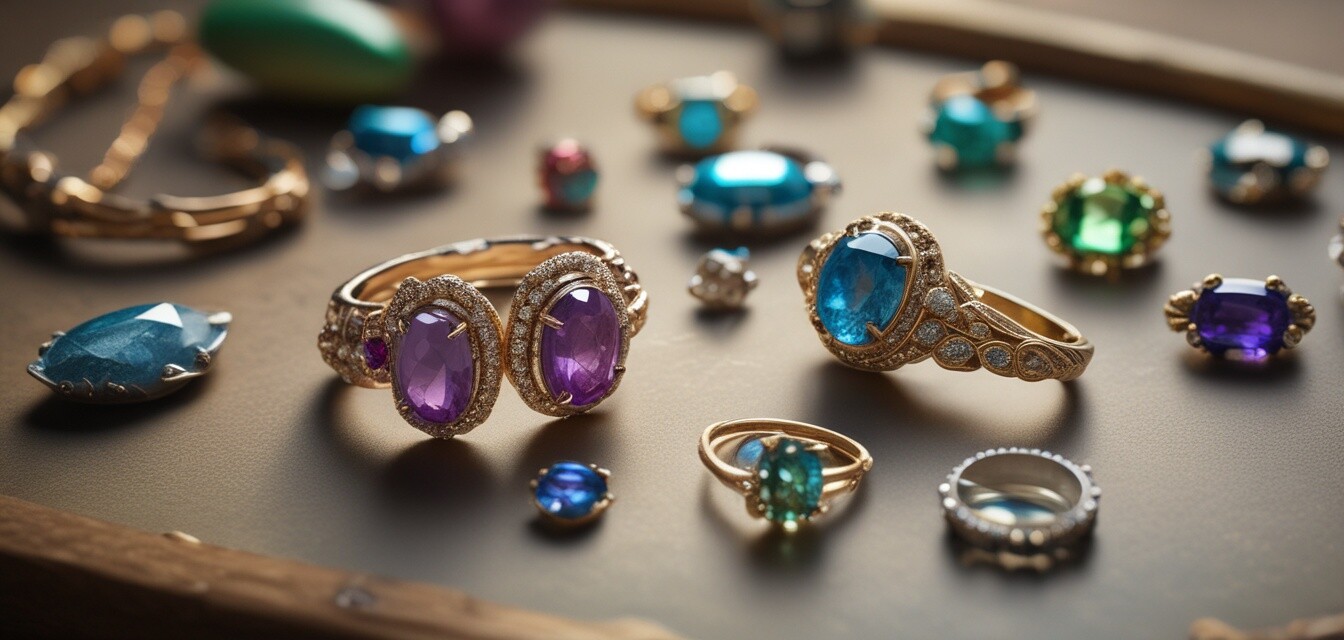
Jewelry Sustainability: Innovations in Recycling
Key Takeaways
- Recycling in jewelry production helps reduce environmental impact.
- Innovative technologies are making it easier to recycle precious metals and gemstones.
- Companies are adopting sustainable practices to attract eco-conscious consumers.
- Beautiful and ethical designs are increasingly popular among buyers today.
In recent years, sustainability has emerged as a major consideration for consumers in various industries, and the jewelry sector is no exception. With growing concerns about environmental degradation, companies are adopting innovative recycling practices to ensure that their production methods are as eco-friendly as possible. In this article, we will explore some of these innovative approaches and the impact they have on the jewelry industry.
The Importance of Recycling in Jewelry
Recycling is essential in the jewelry industry as it helps minimize waste and reduces the need for mining new materials. According to industry studies, mining can lead to habitat destruction and significant carbon emissions. By utilizing recycled materials, jewelers can significantly cut down their carbon footprint. Here are some key reasons why recycling is important in jewelry production:
- Environmental Impact: Recycling helps preserve natural ecosystems by reducing the need for mining.
- Resource Conservation: Using recycled materials conserves valuable resources such as gold, silver, and precious gemstones.
- Ethical Responsibility: Consumers are increasingly looking for ethical jewelry options that align with their values.
Innovative Recycling Practices in Jewelry
Let's delve into some of the innovative practices that are shaping sustainable jewelry production today:
1. Urban Mining
Urban mining involves extracting precious metals and gemstones from electronic waste, such as old smartphones and computers. This method provides a new source of materials without the environmental impact associated with traditional mining. Companies are increasingly using urban mined materials in their designs.
2. Closed-Loop Systems
A number of jewelry brands are implementing closed-loop systems where materials are reused in their products, thereby creating a circular economy. This ensures that materials do not end up in landfills and are continuously repurposed.
3. Advanced Recycling Technologies
Technological advancements in metallurgy allow for the process of separating and refining precious metals from scrap materials. Innovations like hydrometallurgy and pyrometallurgy have made recycling more efficient, enabling jewelers to create high-quality items from recycled sources.
4. Sustainable Gem Cutting Techniques
Gem cutters are now adopting methods that maximize the yield of gemstones, which reduces waste. By minimizing the amount of raw material wasted during the cutting process, the gem industry is working towards becoming more sustainable.
Consumer Trends: What's Driving the Change?
As awareness of environmental issues grows, consumers are taking a stand for sustainability. They are opting for brands that demonstrate commitment to ethical practices. Here are some current trends driving this change in consumer behavior:
- Increased demand for ethical sourcing and transparent supply chains
- Growth in popularity of vintage and second-hand jewelry
- Desire for customizable and unique jewelry made from recycled materials
Future Outlook for Sustainable Jewelry
The future of the jewelry industry looks promising as sustainability continues to gain momentum. Companies are investing in research and development to improve recycling processes and engage consumers in their sustainability efforts. Here are key elements to keep an eye on:
| Trend | Impact |
|---|---|
| Use of AI in sourcing materials | Improved efficiency in recycling operations |
| Blockchain technology | Enhanced transparency in supply chains |
| Collaboration between brands | Shared resources leading to greater sustainability |
How Companies Are Leading the Charge
Many jewelry brands are setting an example by adopting sustainable practices. Companies that focus on recyclability and sustainability not only enhance their brand reputation but also contribute to a healthier planet. Some impactful strategies include:
Pros
- Attract environmentally conscious consumers
- Access to a growing market for sustainable products
- Reduction in production costs through recycling
Cons
- Initial investments in recycling technology can be high
- Consumer education is required to change perceptions
- Availability of high-quality recycled materials can fluctuate
Conclusion
As the jewelry industry evolves, the focus on sustainability and innovative recycling practices will continue to grow. Jewelers who adopt these practices not only engage a new consumer base but also contribute to preserving the environment for future generations. Stay updated with the latest news and trends in the jewelry industry by exploring more articles in our blog category for insightful perspectives and updates.
For those interested in ethical pieces, consider checking out our array of options in our Earrings or Wedding Bands categories, showcasing beautiful designs sourced thoughtfully.